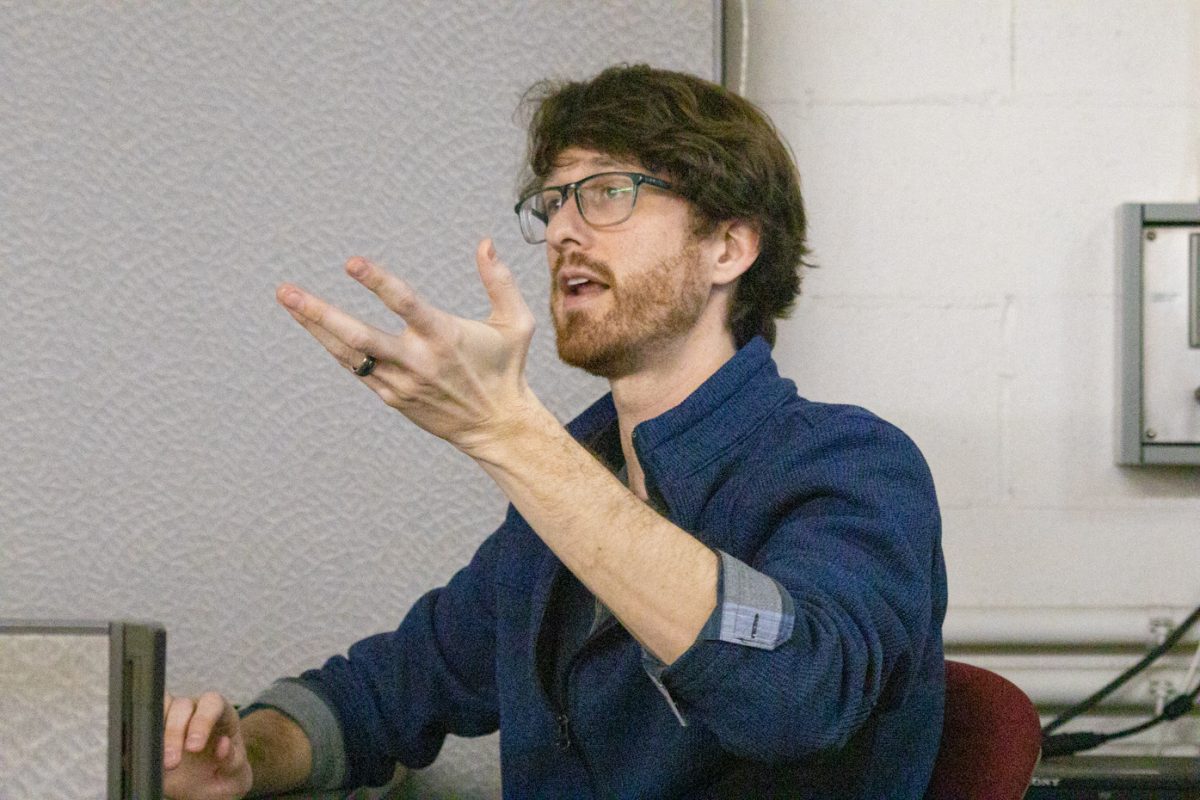Joshua Smith brings a unique academic experience to fine arts students with his classroom philosophy.
Smith, an assistant professor of graphic design, said that his grading system, which is based on attained levels instead of percentages, reflects the real world that fine arts students would work in.
“When learning design, most of the time clients or people that you’re going to work for, they’re not really interested in grades per se,” Smith said. “You wouldn’t go to a gallery and expect to see Picasso’s grades from college.”
Smith assigns a specific number of “levels” to assignments, and students can earn the full number if they meet all the requirements. If the student earns twelve levels, they receive an A in the class. Students who pass the first twelve levels have the opportunity to receive references and letters of recommendation.
With a traditional grading system, a student might see their grade drop, even if they have received a high grade on an assignment. Smith calls this a “carrot and stick approach” that isn’t best for students who learn at a different pace.
“I was a slow learner. I didn’t feel like I had a good project until like my third year of graphic design,” Smith said. “I think it would have been nice if there had been an opportunity to sort of be like, ‘Hey, you’re doing a really good job, even if the work isn’t good yet.’”
Smith said this approach allows students to focus on the big picture of their graphic design education, as well as long-term plans after college.
“They’re trying to build a career,” Smith said. “It’s not just one class, it’s four years. Sure there’ll be ups and downs all throughout, and we should reward them for trying and trying again and picking up and continuing in that way.”
A central aspect of fine arts courses is critique. Students often receive feedback from educators and peers on the work they produce for class. Smith said that attaching a grade to critique increases stress during the experience.
“That can create a negative kind of an engagement where students are feeling like they have to defend their work, rather than look at it objectively,” Smith said.
Mackenzie Kessler, a junior graphic design student, said that Smith’s classes are her favorite.
“He really understands his students and cares about their creative development,” Kessler said. “I don’t think I’ve ever seen him sit at his desk and tune us out before, so he’s incredibly active as a participant in the class as well.”
Taking pressure off of earning a specific grade allows students to engage in creativity on a pure level, according to Smith.
“It’s difficult to be a creative and a professional because the act of creativity is sort of like playing with things,” Smith said. “It’s sort of like childlike engagement of drawing or choosing unique ways to use the tools.”
Smith also offers career advice and passes on internship opportunities he hears about to his students.
“He does a really good job at preparing his students for what is to come,” Kessler said. “So you don’t only gain conceptual knowledge but also tangible resources.”
Kessler said learning under this grading system impacts her beyond comfort in the classroom.
“The quality of my work is greatly impacted positively,” Kessler said. “I’m able to experiment more creatively and conceptually with my work, and when I’m not given a super strict set of guidelines through a rubric.”






